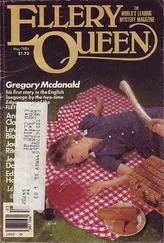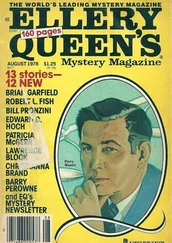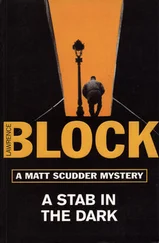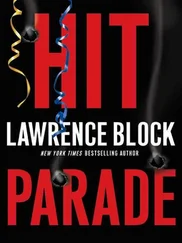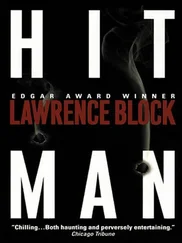The show’s brochure contained photographs of several of the works, along with a brief biography of the artist, a chronological listing of his one-man and group shows, and another list of the museums and private collections in which he was represented. The last two pages were given over to Niswander’s own explanation of what he’d been trying to do, and Keller knew what most of the words meant, but he couldn’t make head or tail out of the sentences. The man didn’t seem to be writing about art at all, but about philosophical determinism and the evanescence of imagery and casuistry as a transcendent phenomenon. Words Keller recognized, every one of them, but what were they doing all jumbled together like that?
The paintings, on the other hand, weren’t at all hard to understand. Unless there was something to them that he wasn’t getting, something that the two pages in the brochure might clarify for someone who spoke the language. That was possible, because Keller didn’t feel he himself understood art in a particularly profound way.
He hardly ever went to galleries, and only once before had he attended an opening. That had been a few years back, when he went to one in SoHo with a woman he’d seen a couple of times. The opening was her idea. The artist was an old friend of hers-an ex-lover, Keller figured-and she hadn’t wanted to show up unescorted. Keller had been introduced to the artist, a scruffy guy with a potbelly, whose paintings were drab and murky seas of brown and olive drab. He hadn’t wanted to say as much to the artist, and didn’t know what you were supposed to say, so he’d just smiled and kept his mouth shut. He figured that got you through most situations.
He tried the wine. It wasn’t very good, and it reminded him of the wine they’d served at that other opening. Maybe bad wine was part of the mystique, bad wine and rubbery cheese and people dressed in black. Black jeans, black T-shirts, black chinos, black turtlenecks and sweatshirts, and the occasional black sport jacket. Here and there a black beret.
Not everyone was wearing black. Keller had shown up in a suit and tie, and he wasn’t the only one. There was a variety of other attire, including a few women in dresses and a young man in white overalls spattered with paint. But there was, on balance, a great deal of black, and it was the men and women in black who looked most at home here.
Maybe there was a good reason for it. Maybe you wore black to an art gallery for the same reason you turned off your pager at a concert, so as to avoid distracting others from what had brought them there. That made a kind of sense, but Keller had the feeling there was more to it than that. He somehow knew that these people wore black all the time, even when they gathered in dimly lit coffeehouses with nothing on the walls but exposed brick. It was a statement, he knew, even if he wasn’t sure what was being stated.
You didn’t see nearly as much black at the museums. Keller went to museums now and then, and felt more at ease there than at private galleries. No one was lurking in the hope that you’d buy something, or waiting for you to express an opinion of the work. They just collected the admission fee and left you alone.
Declan Niswander’s paintings were representational. All things considered, Keller preferred it that way. There was plenty of abstract art he liked, and he tended to favor those artists he could recognize right off the bat. If you were going to make paintings that didn’t look like anything, at least you ought to shoot for an identifiable style. That way a person had something to grab hold of. One glance and you knew you were looking at a Mondrian or a Mirу or a Rothko or a Pollock. You might not have a clue what Mondrian or Mirу or Rothko or Pollock had in mind, but you wound up regarding them as old friends, familiar in their quirkiness.
Niswander’s work was realistic, but you didn’t feel like you were looking at color photographs. The paintings looked painted, and that seemed right to Keller. Niswander evidently liked trees, and that’s what he painted-slender young saplings, gnarled old survivors, and everything in between. There was a similarity-no question that you were looking at the work of a single artist, and not a group show in celebration of Arbor Day-but the paintings, united by their theme and by Niswander’s distinctive style, nevertheless varied considerably one from the next. It was as if each tree had its own essential nature, and that’s what came through and rendered the painting distinctive.
Keller stood in front of one of the larger canvases. It showed an old tree in winter, its leaves barely a memory, a few limbs broken, a portion of the trunk scarred by a lightning strike. You could sense the tree’s entire life history, he thought, and you could feel the power it drew from the earth, diminished over the years but still strongly present.
Of course you wouldn’t get any of that in Niswander’s little essay. The man had managed to fill two whole pages without once using the word tree . Keller was willing to believe the paintings weren’t just about trees-they were about light and form and color and arrangement, and they might even be about what Niswander claimed they were about-but the trees weren’t there by accident. You couldn’t paint them like that unless you honest-to-God knew what a tree was all about.
A woman said, “You can’t see the forest for them, can you?”
“You can imagine it,” Keller said.
“Now that’s very interesting,” she said, and he turned and looked at her. She was short and thin, and-surprise!-dressed all in black. Baggy black sweater and short black shirt, black panty hose and black suede slippers, a black beret concealing most of her short black hair. The beret was wrong for her, he decided. What she needed was a pointed hat. She looked like a witch, no question, but not an unattractive witch.
She cocked her head-now she looked like a witch trying to look like a bird-and looked frankly at Keller, then at the painting.
“There are a few artists who paint trees,” she said, “but it’s generally the same tree over and over again. But in Declan’s work they’re all different trees. So you really can imagine the forest. Is that what you meant?”
“I couldn’t have put it better myself.”
“Oh, sure you could,” she said, and a grin transformed her witch’s face. “Margaret Griscomb,” she said. “They call me Maggie.”
“John Keller.”
“And do they call you John?”
“Mostly they call me Keller.”
“Keller,” she said. “I kind of like that. Maybe that’s what I’ll call you. But don’t call me Griscomb.”
“I wouldn’t dream of it.”
“Not until we know each other a great deal better than we do now. And probably not even then. But I wonder if we will.”
“Know each other better?”
“Because I’m good at this,” she said. “Chatting ever so engagingly with a fellow tree-lover. But I’m not very good at getting to know someone, or getting known in return. I seem to do better in superficial relationships.”
“Maybe that’s the kind we’ll have.”
“No depth. Everything on the surface.”
“Like a thin skin of ice on a pond in winter,” he said.
“Or the scum that forms on the top of a mug of hot chocolate,” she said. “Why do you suppose it does that? And don’t bother working out an answer, because Regis is about to introduce Declan, who will then Say Something Profound.”
Someone was tapping a spoon against a wineglass, trying to get the room’s attention. A few people caught on and in turn shushed the rest. Things quieted down, and the glass-tapper, a willowy young man in gray flannel slacks and a maroon velvet blazer, began telling everyone how pleased he was to see them all here.
Читать дальше

